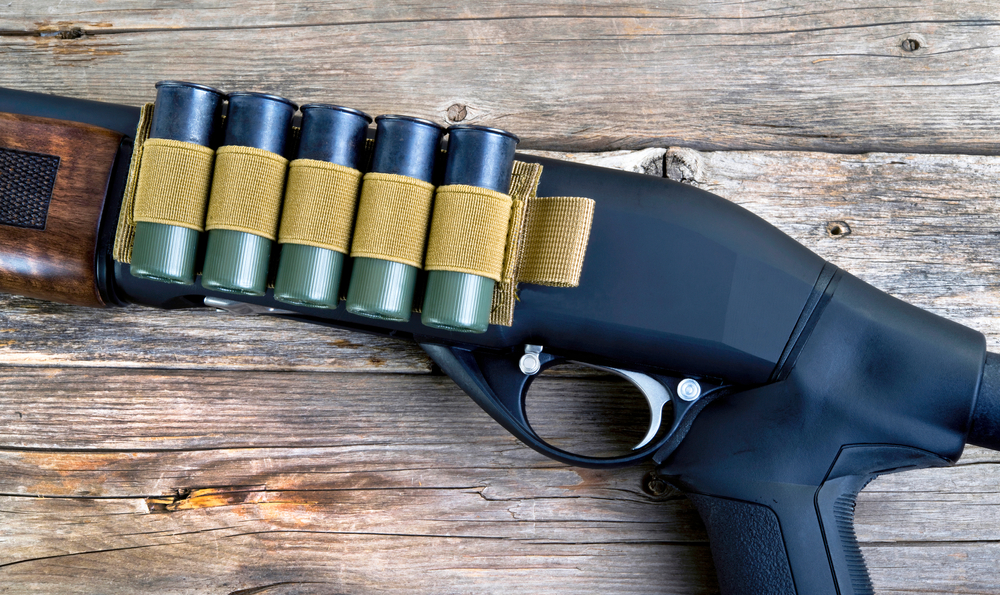One of the risks we all know we face in the event of a major disaster is that of our homes being attacked by hungry people trying to steal our food and other supplies. While none of us truly know what might come, that risk is quite real and will probably become more real the more desperate people become. With that in mind, we all need a defensive plan in place so that we will be prepared to defend our homes and families from such attacks.
The idea of being a lone gunman, holding off the approaching hoards, might look great in the movies, but it doesn’t work in reality. None of us are Rambo, and we don’t have a special effects department to help blow up those vehicles and make it look like our shots are flying true every time. Real-world combat is a whole lot different than what happens in the movies.
That means you need to work as a team to defend your home. I realize that most men will balk at this idea, wanting to keep their family safe while they do the defending. But such action turns into making you a bullet magnet for every bullet out there, increasing the chances of you getting killed. Who will then defend your family after you’ve been shot?
While having everyone in the family who is old enough to shoot as part of the defensive team will increase the chances of other family members being shot, it increases the chances of the family’s survival.
I realize this is a tough decision to make, but it is a necessary one. The more people you have involved in the defense of your home, the greater the possibility that you all will survive. That’s the calculus of the situation, and the only thing that can change it is to do your best to make sure everyone can fight as effectively as possible while also making sure they are defended as well as possible.
Defensive Fighting Positions
Infantry fighting is often defined by the defenses that the soldiers create. During World War I, this took the form of trench warfare. By World War II, the trenches were replaced by foxholes, which took much less time to dig. World War II also introduced sandbagged fighting positions, especially built-up around machine guns and other crew-served weapons.
One of the keys to winning any fight is to make sure that the other guy can’t get you. Regardless of any other consideration, you can’t win if you don’t survive. That’s what those trenches, foxholes, and sandbagged positions were all about. Just like those soldiers needed something to stop bullets from hitting them, your family needs some sort of bullet-resistant defense. The stronger, the better.
Sandbags can be used in your home, building a one-foot thick sandbag wall under the windows since those windows are probably going to be your fighting positions. The floor joists will support a one-foot thick by three-foot high sandbag wall, right up against the wall. One foot of sand is enough to stop most pistol and rifle rounds.
You might want to consider investing in ballistic body armor as well. Keep in mind, though, that ballistic armor won’t stop rifle bullets unless it has a plate installed. Level IIIA body armor stops basically all pistol bullets, but you need to go up to Level IV to stop rifle rounds.
Spread out those defensive positions, too, so that you aren’t bunched together. In the military, this is to keep you from all being taken out by one grenade or mortar round. But even without that risk, spreading out makes it harder for any attackers to concentrate their attack on one position. Regardless of what part of the house they are targeting, they are opening themselves up to flanking fire.
Layered Defense
If you look at any old castle or fort, you’ll see the concept of layered defense in action. This idea, which has existed for centuries, is to have multiple layers of defensive positions that you can use if you have to retreat. By making several layers of positions, you can keep the fight going on, even if you have to retreat. You might also be able to regain positions that are lost, taking the fight back to the enemy.
This is a bit tricky to accomplish in the average urban or suburban home due to a lack of space. Most of us don’t have 100 yards between our front door and our property line. Nevertheless, if you have a decent-sized front yard, there are still things you can do.
To start with, your defense starts with your property line. Beyond that, it would be difficult to call it self-defense unless they start shooting at you before they cross onto your property. Shooting at potential adversaries with a sniper rifle doesn’t qualify as self-defense in anyone’s book unless, again, they start shooting at you first.
Since the battle basically starts at your property line, you can build defensive positions outside your home, the same sort of sandbag positions that I mentioned they used during World War II. Perhaps the ideal position would be right in front of your door. Just make sure that you can move from those positions into your home without exposing yourself to enemy fire. Anyone who is in those firing positions needs to be able to count on covering fire from the people in the house.
It would be nice to have a second layer of defensive positions, farther away from the home, but in most cases, that’s impossible to do, as you just don’t have enough room. Probably the only way that you could accomplish that is to band together with your neighbors and blockade the street. That would put the first defensive layer at the blockade.
Your second layer of defense is the walls of your home, your primary defensive layer. The walls of your home won’t stop bullets, not even on a brick home. The only thing that will is stone walls, but even then, most stone walls are merely a thin layer rather than actual stones.
But what if they breach the walls of your home? That’s why you need a final layer of defense, a centrally located room in the home, where everyone can gather to make a last stand. Ideally, it should be at the end of a long hall that the attackers would have to come down to get to you. It also needs a concealed way to get to your escape route so that your family can still escape and survive if the battle is lost.
Massed Fire & Sniper Tactics
The way that you shoot at the attackers is important as well. Obviously, you want to hit them, but you also want to use your shots in a way that provides the maximum possible psychological value. Warfare is more about psychology than about firepower, a fact that has alternately been remembered and forgotten throughout history.
Your goal isn’t necessarily to kill, although that might be necessary. Rather it is to eliminate your enemy’s ability to fight. That’s where psychology comes in. If you succeed in getting them to run away in fear, you’ve accomplished your goal and won the battle. Yes, they might come back; but the only thing you can do to stop that from happening is to kill them all.
One of the strategies that have been developed over the years is massed fire. If you remember paintings of the Revolutionary War, the soldiers would line up by platoon, march into battle, and an entire rank of soldiers would fire at the same time, under the orders of their lieutenant. The idea wasn’t just to send a bunch of lead into the enemy’s ranks but to have the enemy see that massed fire coming at them. At that moment, they are likely to forget about their mates on either side of them, seeing it as if all those bullets were headed straight at them. That generates fear and can cause men to break ranks and run.
Another excellent tactic, which was first employed by General Washington, during the Revolutionary War, is the use of sniper fire. Snipers do more than just shoot from hiding or from great range. They target officers, trying to take out the leadership. Doing so creates confusion in the ranks and can cause the enemy’s attack to be uncoordinated.
There are always leaders in any group, whether they hold a formal leadership position or not. In the type of informal group that will be attacking your home, the leaders will be obvious because they will be the ones talking, egging the others on, and giving whatever rudimentary commands are needed. That’s something you will be able to see, painting a bulls-eye on their shirt.
Taking out the leader of such a group can be enough to cause the attack to falter and the attackers to scatter. While there may very well be others in the group who can take the leadership position, there will also be some who are only there because they were dragged into it. With the leader gone, they will lose their motivation, having it replaced by fear.























































































Doesn’t this go against the survival philosophy of making yourself not noticed soo that you don’ have to fight off a mob trying to seal your supplies? Won’t turning your dwelling into an armed camp just make the mob notice and assume you are protecting what they want?
Interesting. I have noticed that certain ‘organized armed peaceful demonstrator groups’ attach wrist bands to themselves so they can distinguish friend from foe. The Ukrainians and Russians are using colored arm bands. UN forces wear blue helmets. The point is high power optics, including IR and thermal can give you the knowledge of this type of indicator. If they are wearing these, their intent is not peaceful when in your neighborhood. Therefore, shot them as far away as possible. Leaders first as suggested. It is a traditional tactic. If your neighborhood is organized with communication and coordination you should be able to turn scavenging aggressors away relatively easy. Para-military would take significant commitment for mutual support. Worse of all is if your neighbors are the scavengers. People trying to feed their family have a pervasive motivation and endurance. If you are not blessed like the widow of zarephath, then things will be challenging.
lay down a coil of barbed wire INSIDE and under your windows to entrap any who breach; then “handle” them
the intent is to keep them out of the house so you don’t have to ‘ handle ‘ them
While the defense posture discussed above is certainly important, a retreat, regroup, and evade plan is just as important and vital for survival.
Surveillance and intelligence forewarning should also be considered so you are aware of attacks before needing to defend and knowing what you are up against. Any normal home has no defense against even a WWII 57mm recoilless rifle.